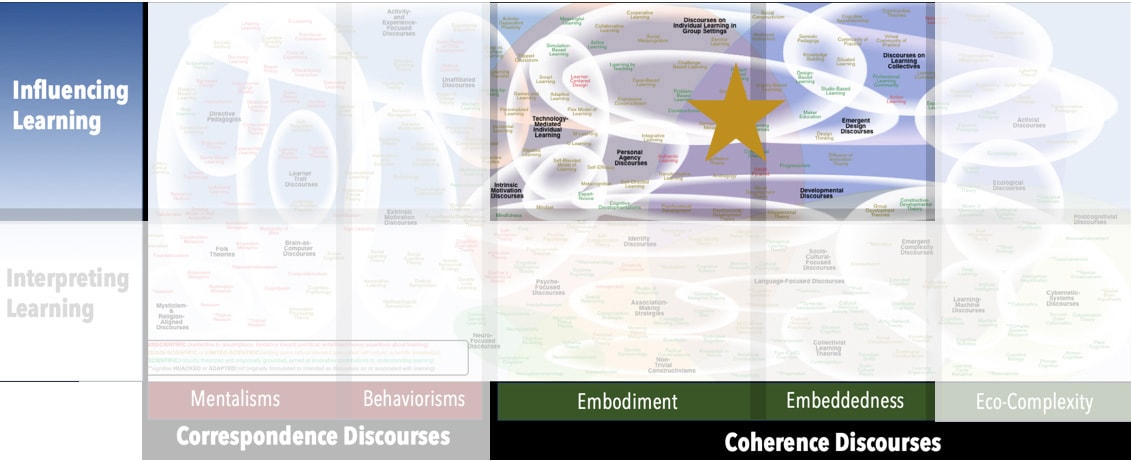Focus
Individual differences/preferences figuring into evolution of collective actions and interpretationsPrincipal Metaphors
While not explicitly stated by authors of Diffusion of Innovation Theory, the perspective can be read as characterizing two simultaneous learning systems, the individual and the social system. On the individual level:- Knowledge is … range of available ideas, actions, and artefacts
- Knowing is … using
- Learner is … decision-maker
- Learning is … adopting an innovation
- Teaching is … encouraging adoption; promoting an innovation
- Knowledge is … range of available ideas, actions, and artefacts
- Knowing is … general use
- Learner is … social system
- Learning is … diffusion of innovation
- Teaching is … innovating
Originated
1960sSynopsis
Diffusion of Innovation Theory is a descriptive model of how perceived innovations – including ideas, actions, or artefacts – are adopted by and diffuse through a population. The theory includes a taxonomy of adopters, which are assumed to be normally distributed: Innovators (2.5%); Early Adopters (13.5%); Early Majority (34%); Late Majority (34%); Laggards (16%). The theory also identifies stages of innovation (awareness of need; decision to adopt/reject; initial use; continued use) and five main factors that influence adoption (relative advantage; compatibility; complexity; tryability; observability). Associated discourses include:- Normalization Process Theory (Carl May, Tracey Finch, 2000s) – a perspective on how expressions of individual and collective agency give rise to resilient, pervasive social processes. Four generative mechanisms are emphasized: Coherence/Sense-Making; Cognitive Participation/Engagement; Collective Action/Implementation; Reflexive Monitoring/Appraisal.
Commentary
Diffusion of Innovation Theory is a good example of formalized common sense. Most are already aware that different people adopt innovations at different paces, and different people are differently motivated. The theory fails to take into account a myriad of other critical factors, such as the roles of wealth, education, and location. That said, in consideration of when it was developed, Diffusion of Innovation Theory represents an important innovation in the conceptual space, offering an early articulation of collective learning (as diffusion of innovation).Authors and/or Prominent Influences
E.M. RogersStatus as a Theory of Learning
On the individual level, Diffusion of Innovation Theory is inattentive to its own use of metaphor and makes no attempt to understand the complex dynamics of personal learning. On the level of social systems, Diffusion of Innovation Theory offers one characterization of how collectives learn. On that level, it can be characterized as a theory of (collective) learning. However, the theory was purposely developed to influence that sort of learning, and so is better classified as a theory of teaching.Status as a Theory of Teaching
In terms of the original intentions of its authors and adopters, Diffusion of Innovation Theory is a theory of (collective) teaching – that is, a theory of how to go about deliberately affecting a social system. It does so through focused advice on influencing different types of adopters.Status as a Scientific Theory
Diffusion of Innovation Theory has been effectively adopted in many fields, including marketing, agriculture, criminal justice, social work, and public health. However, because it is inattentive to the metaphors it invokes and advances, it does not meet all our criteria for a scientific theory.Subdiscourses:
- Normalization Process Theory
Map Location

Please cite this article as:
Davis, B., & Francis, K. (2022). “Diffusion of Innovation Theory” in Discourses on Learning in Education. https://learningdiscourses.com.
⇦ Back to Map
⇦ Back to List
